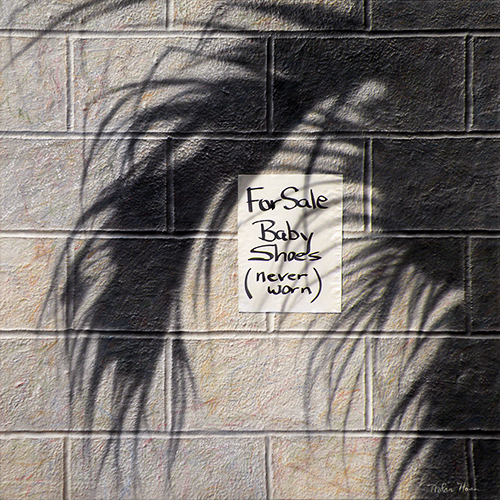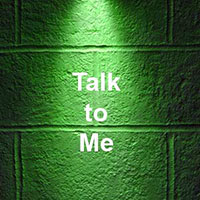The Art of Rejection
Rejection is part of the normal life cycle for creative people, so learning to cope is critical to our long term survival. When that thin envelope arrives from the “call for entries," we already know that the first words will be, “This year there were many strong entries, unfortunately…” Rejection notices always arrive in thin envelopes. The thick ones are reserved for the anointed few, packed with information on delivery and pickup, etc. Has anyone ever read an entire rejection letter? Mine are usually crumpled up before I finish the first line. My initial reaction is anger, directed at the “stupid judges” of course. What were they looking for, anyway? Having done my due diligence by googling them, I knew exactly what they liked. I had chosen paintings specifically with them in mind. How could they have not seen the fabulousness of my entry? The anger stage is followed by embarrassment. “Will anyone remember I entered this?” You get a knot in your stomach every time you see an ad for the event. The final insult comes when you see the show itself. You go from picture to picture thinking bitterly, “How did this get in and not mine?” “How did this get in and not mine?” “How did this get in and not mine?” You lick your wounds for a while, but hopefully you have the strength to subject yourself to it all over again.

King Eider by Nolan Haan
Intellectually I can accept rejection easily. I understand that many factors come into play, only one of which is the quality of the artwork. Emotionally, however, rejections still hurt. Each artist thinks his/her work is da bomb. Unfortunately, this bravado is thin, and every rejection chips away at our fragile belief in ourselves. To my fellow artists I say, "Next time that thin envelope arrives, think of my king eider getting all 'outs' and believe that your work has merit."
•••••
My Mondrian Bathroom
I had never heard of Mondrian. I was a science teacher and wildlife artist with no formal art training or knowledge of art history. It was 1988, and I had just declared myself a contemporary artist. I had my concept—portraits of cinder block walls—but my lack of education was obvious. To overcome this deficit, I decided to teach myself art history. My method was simple: choose a famous artist, study his/her life, artwork, methods, and philosophy, then close all the books and create a painting in that style. Of course, I also wanted to integrate my cinder block walls into the new artwork.
 My first attempt at these appropriation paintings featured Mondrian. The working concept was: imagine finding an undiscovered Mondrian in someone's basement.
My first attempt at these appropriation paintings featured Mondrian. The working concept was: imagine finding an undiscovered Mondrian in someone's basement.
For new readers unfamiliar with my work, this is a trompe l'oeil (fool-the-eye) painting, using acrylic paint on silk. Everything is painted: the Mondrian, the cinder block, and the spotlight effect. While working on this painting, I read a book entitled Subliminal Seduction, which exposed the practice of advertisers who embed subliminal suggestions into their ads. For fun, I incorporated the word SEX into the cinder block texture on the lower portion of the painting. It's supposed to work subliminally, but if you look closely, you will see the letters S-E-X. This proves that (some) artists will do almost anything to entice a viewer to better enjoy the art.
Ten years after completing the painting, I sat staring at a tiny bathroom in my newly acquired historic house in Fort Lauderdale, Florida. The bathroom needed complete renovation, so the canvas was blank. The house was built in the 1920's, so I decided to introduce art deco elements throughout. Since Mondrian was a prominent artist of the era, he was my inspiration for the half bath.
 The bathroom was to feature the Mondrian design in tile on the main wall, with gray tiles on two walls and a mirror on the other. The floor was painted with faux tiles in shades of gray (to reflect image of the Mondrian.) I drew the design on graph paper to the exact scale of the wall, then purchased tiles in the colors needed. Having never laid tile, I purchased a book entitled Setting Tile, borrowed a tile saw, and got to work. I'm not fishing for compliments, but you've got to admit, this bathroom is FIERCE!
The bathroom was to feature the Mondrian design in tile on the main wall, with gray tiles on two walls and a mirror on the other. The floor was painted with faux tiles in shades of gray (to reflect image of the Mondrian.) I drew the design on graph paper to the exact scale of the wall, then purchased tiles in the colors needed. Having never laid tile, I purchased a book entitled Setting Tile, borrowed a tile saw, and got to work. I'm not fishing for compliments, but you've got to admit, this bathroom is FIERCE!
So, for those of you agonizing over what color to paint the bathroom, I say, "Throw caution to the wind" and have fun. Find a source of inspiration and go for broke.
Please bookmark this page, so you can find me again. I hope you have an inspired week.

Forgotten Mondrian by Nolan Haan
For new readers unfamiliar with my work, this is a trompe l'oeil (fool-the-eye) painting, using acrylic paint on silk. Everything is painted: the Mondrian, the cinder block, and the spotlight effect. While working on this painting, I read a book entitled Subliminal Seduction, which exposed the practice of advertisers who embed subliminal suggestions into their ads. For fun, I incorporated the word SEX into the cinder block texture on the lower portion of the painting. It's supposed to work subliminally, but if you look closely, you will see the letters S-E-X. This proves that (some) artists will do almost anything to entice a viewer to better enjoy the art.
Ten years after completing the painting, I sat staring at a tiny bathroom in my newly acquired historic house in Fort Lauderdale, Florida. The bathroom needed complete renovation, so the canvas was blank. The house was built in the 1920's, so I decided to introduce art deco elements throughout. Since Mondrian was a prominent artist of the era, he was my inspiration for the half bath.

Mondrian Bathroom by Nolan Haan
So, for those of you agonizing over what color to paint the bathroom, I say, "Throw caution to the wind" and have fun. Find a source of inspiration and go for broke.
Please bookmark this page, so you can find me again. I hope you have an inspired week.
•••••
FOR SALE: Baby Shoes (never worn)

"Short Story by Hemingway" by Nolan Haan
Everything about this impressed me. Six simple words became so powerful when used in this context. Multiple interpretations, depending on one's point of view, engaged the reader. I had to somehow collaborate with Hemingway to reinterpret his words in my style. Since I do paintings of cinder block walls, my immediate idea was some form of graffiti. The words scrawled on a distressed wall, perhaps. Or stenciled words streaked with mold and drips. As I walked my dog that evening, a piece of paper, stapled to a telephone pole, advertized a garage sale. Click.
A concept was taking shape. In my mind's eye, I envisioned a cinder block wall on which someone had glued a paper selling baby shoes. I wanted to keep it simple, just as Hemingway had. As a long time resident of south Florida, I've always been fascinated with shadows of tropical plants cast on houses, walls, and sidewalks. This was the ideal time to incorporate them in a painting. My concept was complete. Now I just had to paint it.
The finished painting is presently on loan and hanging in a friend's house. Every new visitor to her home is always asked, "What does this painting mean to you.?" We are amazed by the range of answers, which proves how much a viewer brings to an artwork. This is how it should be. A viewer's input and interpretation is as valid as the artist's. P.S. If you google "for sale baby shoes never worn" you'll find entire websites dedicated to short stories in six words. If any of you write one, I'd love to read it. If you have any questions, I will do my best to answer them. Have a good week and keep those antennae up.
•••••
Thank you for taking the time to read my blog. Please make yourself a cup of coffee and explore my website. Much love.






